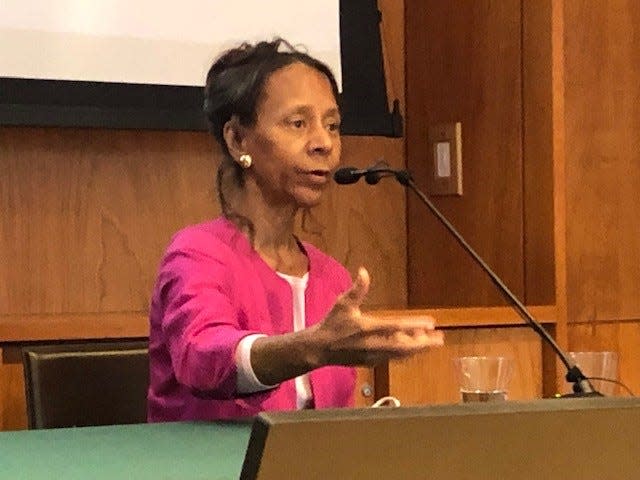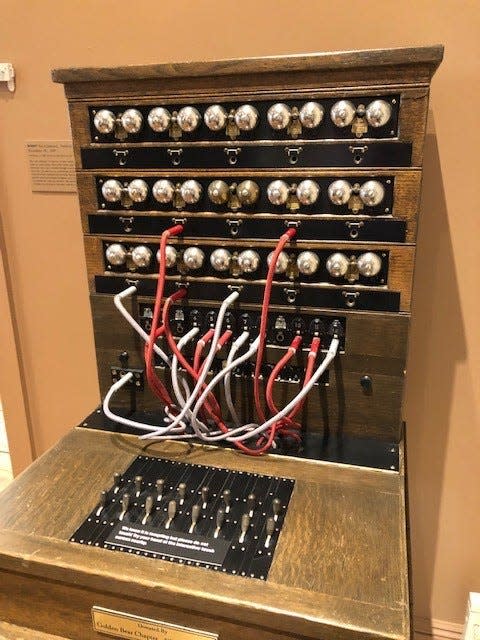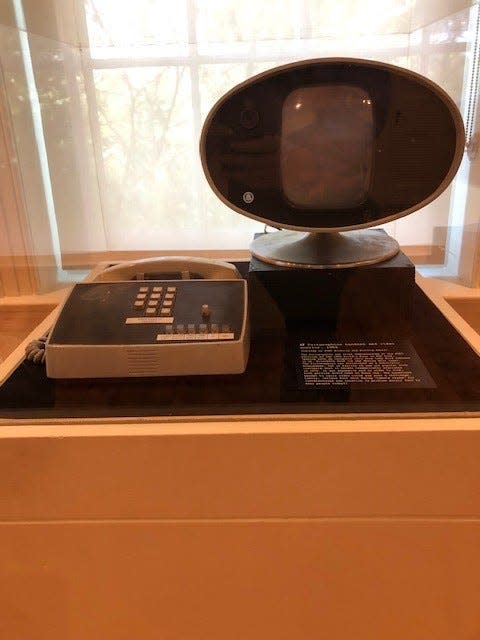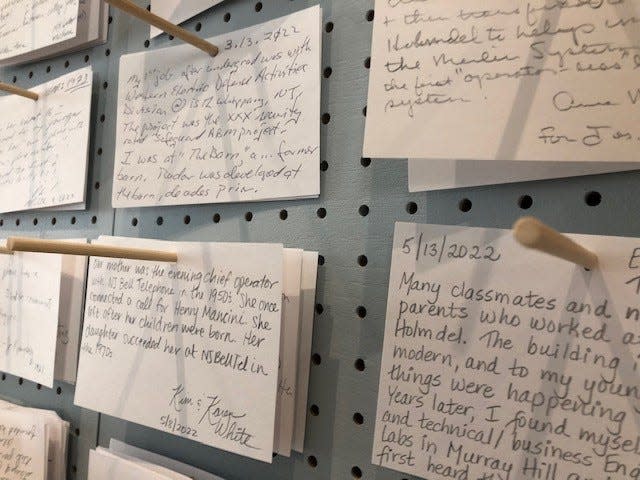'This is heaven': Bell Labs Black scientist inventions connected world through pandemic
PRINCETON - To hear Marian Croak tell it, those video calls that got you and corporate America through the pandemic lockdowns almost didn't happen.
Croak was a young scientist at Bell Labs in the 1980s, when she asked the higher-ups to let her lead a team that would work on a project to allow voice to travel over the internet.
"Actually, they thought it was ridiculous," said Croak, 67, a Fair Haven resident. "You know, they said the internet was a toy and it was never developed to carry voice and it could never be made reliable enough to carry business-grade traffic. But they gave me a lab and I had a few people who were true believers, like I was."
Croak, a pioneer in Voice over Internet Protocol, was among the scientists who spoke Tuesday night at "20th Century Black Renaissance at Bell Labs," part of the Morven Museum & Garden's year-long exhibit looking at the impact of AT&T's history in New Jersey.
High Tech High: Students find figuring out complicated remote-work questions pays off

The program spotlighted not only trailblazing inventors, but also issues that continue to ripple through the country, from social justice to the promise — and danger — of technology.
Croak was joined by: James West, who shared a patent on the electret microphone used today in telephones, sound recording and hearing aids; Clyde Bethea, whose work was used by NASA for space-based imaging systems; and William Massey, a mathematician whose breakthroughs in queuing theory help predict traffic load for everything from call centers to COVID hospital cases.
They all were drawn to Bell Labs, the research arm of AT&T that operated in Holmdel and Murray Hill and set the stage for scientists to develop some of the most important breakthroughs in communication technology.
Bell Labs to Bell Works: How one man saved the historic site and made it a tech mecca
The company's history from Alexander Graham Bell to the breakup of its monopoly in 1982 is on display at the Morven Museum through March in an exhibit that takes care to recognize the contributions of women and people of color.
Bell Labs' record on race isn't spotless. William Shockley, one of the company's most celebrated scientists for his work on the transistor that garnered him the Nobel Prize in physics, was a notorious white supremacist.
But the Black scientists who gathered here said they found the company welcoming.
They said their curiosity in science was sparked at a young age. West's aunt gave him a book about Benjamin Franklin's discovery of electricity. Bethea was enamored with Christmas lights as a child.
'It could have been me': Black, Jewish communities in Monmouth, Ocean counties on edge after mass shooting

'I'll teach you what I know'
When they arrived at Bell Labs, they said they had no shortage of mentors, both Black and white, to lean on for support.
West said he turned to W. Lincoln Hawkins, a giant in polymer chemistry, who, in 1942, became Ball Labs' first Black scientist.
Hawkins gave his advice with humility.
"His response was, 'I'll teach you what I know, but that's not going to be enough,'" West said. "So he warned me there were things he could tell me, but there were things that he didn't even know."
Croak, a single mother of three adult-age children, now is a vice president for Google, usually working out of her Fair Haven home. She has more than 200 patents to her name, and her awards are piling up; she was inducted this year into the National Inventors Hall of Fame.
Her path also included an interest in science that was fostered at a young age, and helpful advice that came along at key times.
Croak grew up in New York City tinkering with a chemistry set her father bought for her, and her parents approved of her hobby — so much so that they didn't get too mad when they found out she accidentally scorched a wall in the house.
"They just said, 'Tell us, next time,'" Croak recounted after the panel.
Therapy with a robot?: How AI could help those struggling with mental health

'Your voice is the most important voice in that room'
She went to Princeton University, then to the University of Southern California, where she studied social psychology and quantitative analysis. She joined Bell Labs in 1982 in the Human Factors department, which set out to ensure technology would be used for the common good.
With AT&T's monopoly breaking up, the department was phased out within six months. Croak moved to systems engineering and learned her unique background was an advantage, allowing her to look at complex problems from a different perspective.
And she found support from managers, who saw leadership qualities despite — or, perhaps, because of — her soft-spoken voice.
"'Your voice is the most important voice in that room,'" she said of a message from one department head that stuck with her. "And he would just give me that type of encouragement, which I found to be remarkable, because he would say it, and then I would believe it."
The scientists continue to research and mentor. Bethea is working on technology to detect cancer with better imaging. Massey, now a Princeton professor, taught Nicholas Johnson, who in 2020 became the first Black valedictorian in Princeton's 274-year history.

'I think we can do this'
And Croak has her hands full. Her expertise in human behavior and technology has put her on the front lines at Google battling harmful artificial intelligence that has led to the rapid spread of misinformation.
She sounded hopeful. She said people created the technology; they can create tools to ensure it is socially beneficial as well.
It's not her first difficult task. She helped create Voice over Internet Protocol, or VoIP, taking an idea that was met with skepticism among her Bell Labs managers into a tool that would be used to connect friends, families and colleagues during a global pandemic.
"I thought, let's give it a try, I think we can do this," Croak said. "And it was much more difficult than I thought it would be, but we did do it, and we got it to scale. We got it to be reliable. And today, I would say VoIP is used to carry maybe 95% of the voice traffic in the world."
"Now I have to give credit to these gentlemen," she said of the other panelists. "Because I walked into Bell Labs and I thought, 'This is heaven.' But think of all the work that had gone on before I got there."
If you go:
What: "Ma Bell: The Mother of Invention in New Jersey"
Where: Morven Museum & Garden; 55 Stockton St.; Princeton
When: Through March 5, 2023
Times: Wednesday through Sunday, 10 a.m. to 4 p.m.
Michael L. Diamond is a business reporter who has been writing about the New Jersey economy and health care industry for more than 20 years. He can be reached at mdiamond@gannettnj.com.
This article originally appeared on Asbury Park Press: Princeton NJ Morven Museum exhibit fetes Black Bell Lab scientists

